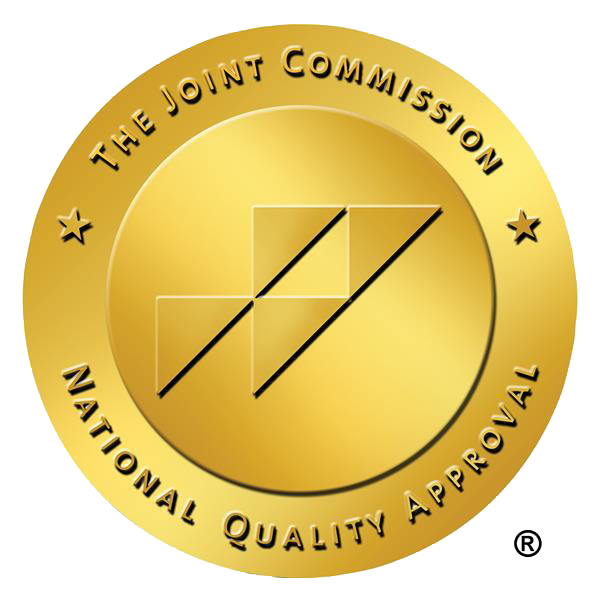Therapeutic Approaches for Adjustment Disorder
Once diagnosed, the focus shifts to treatment. There are various methods for treating adjustment disorder due to its range of symptoms and subtypes. Psychotherapy—or talk therapy—is preferred.
Talk therapy is particularly suitable since it’s usually a short-term treatment that aligns with the Temporary aspect of adjustment disorder. This therapeutic strategy delivers prompt and specific interventions designed to assist in overcoming the condition.
Cognitive Behavioral Therapy (CBT)
Among the different therapeutic approaches, Cognitive Behavioral Therapy (CBT) shines as a preferred short-term psychotherapy option for treating adjustment disorder. Like a skilled craftsman, CBT targets and modifies maladaptive thoughts and behaviors that contribute to emotional distress, shaping them into healthier patterns of thinking and behavior.
In the hands of a mental health professional, CBT becomes a tool for developing coping and problem-solving skills. It assists individuals in managing stress and reframing stressful situations into more manageable steps. Techniques like behavioral activation, mindfulness, and cognitive flexibility are employed in CBT, offering a multifaceted approach to treatment.
The therapeutic relationship in CBT offers:
- A supportive and non-judgmental environment
- Empowerment to better understand and navigate feelings and thoughts
- A safe harbor for individuals grappling with adjustment disorder to find solace and strength to overcome their challenges.
Family and Couples Therapy
Family and Couples Therapy offers a valuable option for addressing adjustment disorder. It targets the enhancement of communication capabilities and tackles stressors within relationships, thus creating a conducive setting that fosters healing from adjustment disorder.
When dealing with an adjustment disorder stemming from issues in romantic partnerships, couples therapy is vital. Likewise, when it concerns children and adolescents affected by this condition, family therapy concentrates on refining their communication proficiency, fortifying familial bonds, and augmenting the support system within the family unit.
Group Therapy and Support Groups
Support groups and group therapy are crucial elements in the treatment arena for those suffering from adjustment disorder. Employing techniques grounded in cognitive-behavioral theory, group therapy has proven effective for adults struggling with this condition. For adolescents, peer group therapy provides a nurturing space that enhances social and interpersonal abilities, encourages the sharing of emotions, and cultivates empathy.
Consequently, these collective therapeutic strategies stand as foundational supports bolstering an individual’s path to healing from adjustment disorder.
Medication Management in Adjustment Disorder Treatment
In addition to psychotherapy, managing medication also contributes to the treatment of adjustment disorder. The most commonly prescribed medications include benzodiazepines like lorazepam (Ativan) and alprazolam (Xanax), nonbenzodiazepine anxiolytics such as gabapentin (Neurontin), and antidepressants. These medications aim to alleviate debilitating symptoms such as insomnia, anxiety, and depression, providing relief and facilitating recovery.
Selective Serotonin Reuptake Inhibitors (SSRIs) or Serotonin-Norepinephrine Reuptake Inhibitors (SNRIs), like sertraline (Zoloft) or venlafaxine (Effexor XR), are also used to treat depression and anxiety symptoms in adjustment disorder. Nonbenzodiazepine anxiolytics like etifoxine have shown effectiveness, sometimes more so than lorazepam, for patients with adjustment disorder.
However, the use of medications in the treatment of adjustment disorder should be carefully considered. While they can provide relief from distressing symptoms, their use in less severe forms of Adjustment Disorder is not properly founded and should generally be avoided. Moreover, the use of psychotropic drugs should be closely monitored, with patients being cautioned not to stop taking their medication without consulting their healthcare professional first.
In children and adolescents, the role of medication in treating adjustment disorder is even more limited. Its use should be carefully considered, taking into account the unique developmental needs and potential risks associated with psychotropic drugs in younger populations.
Building Resilience and Coping Skills
Resilience and coping skills serve as the individual’s shield against adjustment disorder. Resilience, the ability to adapt well to stress and bounce back from difficult experiences, can be enhanced through:
- Self-care routines
- Taking decisive action
- Building supportive relationships
- Engaging in purposeful activities
- Learning from past challenges
- Maintaining hope and openness to change
Developing coping skills is another essential component in managing the symptoms of adjustment disorder. This includes engaging in aerobic exercise to help stabilize the autonomic nervous system and practicing these skills early to mitigate the disorder’s impact.
Early intervention can also play a pivotal role in fostering the development of coping skills and resilience. By doing so, it can reduce the risk of severe complications such as overwhelming symptoms or suicidal thoughts. This highlights the importance of resilience and coping skills not only in managing adjustment disorder but also in preventing its escalation.
In essence, building resilience and coping skills is like weaving a safety net. It equips individuals with the strength and skills to face life’s challenges, bounce back from setbacks, and navigate their journey towards recovery with confidence and determination.
The Importance of Early Intervention
Early intervention in adjustment disorder can be compared to quelling a small flame before it escalates into a destructive inferno. It can reduce the severity of symptoms, prevent the condition from becoming more severe, leading to higher recovery rates, and reduced impact on daily life. By addressing mental health concerns early, individuals can reduce healthcare costs and indirect costs related to decreased productivity and compromised quality of life.
Early treatment also promotes:
- the understanding that mental health issues are a normal part of life and seeking help is a sign of strength
- reducing the stigma associated with mental health concerns and encourages individuals to seek help
- improving the quality of life, helping individuals deal with stressful life events more effectively
- enabling access to necessary resources and support
- leading to better long-term socio-economic outcomes.
Moreover, early treatment can significantly reduce the intensity and duration of treatment required for adjustment disorder. Most individuals have the potential to recover completely if the disorder is diagnosed and treated promptly. This highlights the importance of seeking timely professional help after experiencing an upsetting event that interferes with daily life, paving the way for a positive therapeutic outcome.
Special Considerations for Children and Adolescents
The realm of children and adolescents dealing with adjustment disorders presents a distinctive scenario that demands unique considerations. Unlike adults, children and adolescents often exhibit symptoms differently, influencing the factors that contribute to the disorder. Adolescents, for instance, show more behavioral issues like:
- acting out
- aggression
- defiance
- irritability
Treating children and adolescents with adjustment disorder involves initiating treatment that is adapted to their developmental stage. This can improve outcomes and support normal growth and development. Family therapy can play a crucial role in treating adjustment disorder in younger populations by reducing family conflict, enhancing communication, and equipping caregivers to effectively manage their child’s symptoms.
In essence, treating children and adolescents with adjustment disorder requires a comprehensive approach that takes into account their unique developmental needs, the influence of family and relationships, and the crucial role of constant support from caregivers.
Summary
Delving into the intricacies of adjustment disorder reveals a multifaceted mental health condition that, though challenging, can be navigated successfully with resilience and coping skills. Grasping its characteristics, origins, and treatment alternatives is essential for managing this condition effectively. The forecast for those facing adjustment disorder is encouraging when they have access to early intervention and proper care. As society progresses in eradicating mental health stigma and equipping people with knowledge plus support systems, it becomes possible to overcome the hurdles associated with adjustment disorder by fostering fortitude and adaptability in individuals confronting life’s obstacles.








